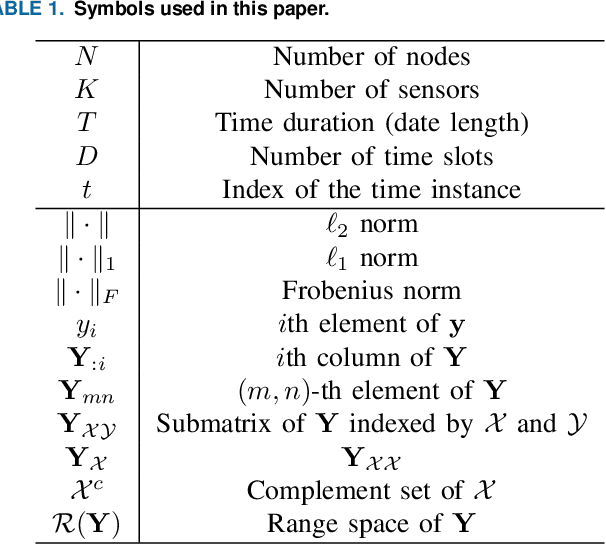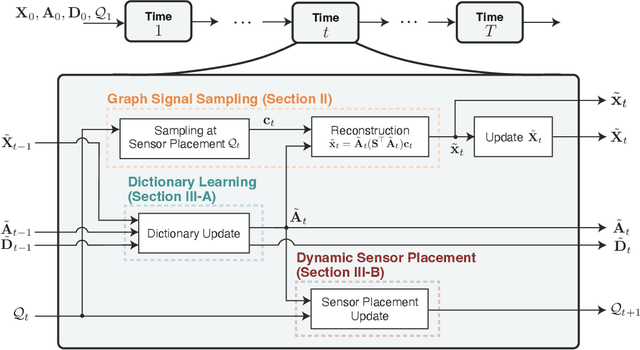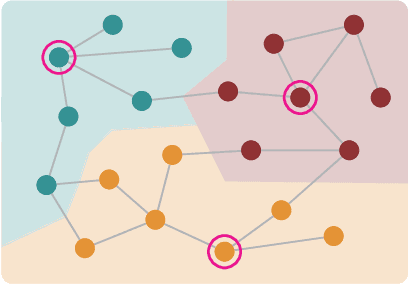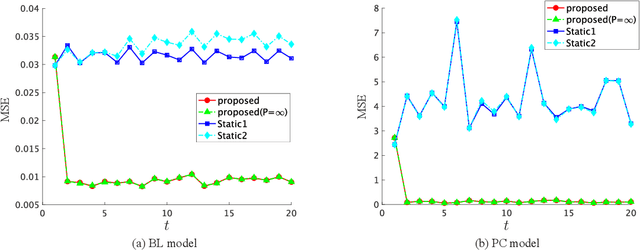Dynamic Sensor Placement Based on Graph Sampling Theory
Paper and Code
Nov 08, 2022



In this paper, we consider a dynamic sensor placement problem where sensors can move within a network over time. Sensor placement problem aims to select M sensor positions from N candidates where M < N. Most existing methods assume that sensors are static, i.e., they do not move, however, many mobile sensors like drones, robots, and vehicles can change their positions over time. Moreover, underlying measurement conditions could also be changed that are difficult to cover the statically placed sensors. We tackle the problem by allowing the sensors to change their positions in their neighbors on the network. Based on a perspective of dictionary learning, we sequentially learn the dictionary from a pool of observed signals on the network based on graph sampling theory. Using the learned dictionary, we dynamically determine the sensor positions such that the non-observed signals on the network can be best recovered from the observations. Furthermore, sensor positions in each time slot can be optimized in a decentralized manner to reduce the calculation cost. In experiments, we validate the effectiveness of the proposed method via the mean squared error (MSE) of the reconstructed signals. The proposed dynamic sensor placement outperforms the existing static ones both in synthetic and real data.
 Add to Chrome
Add to Chrome Add to Firefox
Add to Firefox Add to Edge
Add to Edge